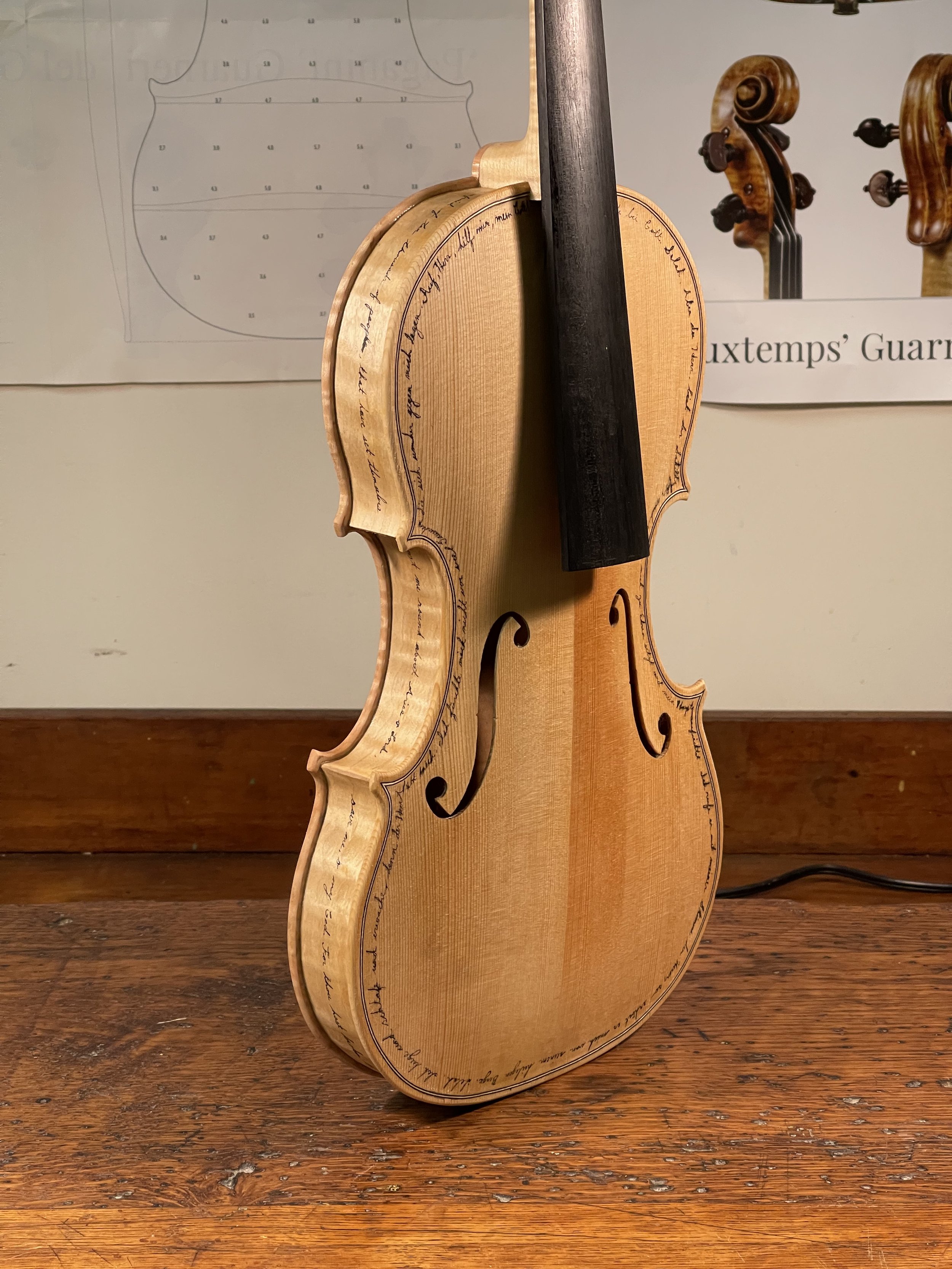
The Psalm Violin Project
The Psalm Violins
How it started
At the beginning of my violin journey, I pondered how I would label and number my instruments. Violinmakers have many different methods for personalizing their instruments, like stamps on bridges or on the inside of instruments, special carvings on the outside, engraved initials, special labels, etc. This is important because it helps to verify the authenticity of an instrument, but it’s also a signature mark of the maker.
Eventually, through what I like to think was divine inspiration, I decided that I would inscribe the Psalms on all of my violins, to correspond with the order in which the instrument is built (1st violin, 1st psalm). For me, calligraphy as a whole is a beautiful art, and the written psalms are a personal artistic touch to my violins.
Why the Psalms?
I believe in the power of religious scripture, and I highly value the religious texts of peoples from across the globe.
The Psalms for that matter are concise, poetic, inspiring, prosodically beautiful, and even are inherently musical in purpose. They are after all ‘songs’ of worship. They fit perfectly on a violin, and can be abbreviated or repeated as necessary.
How many Psalms are there?
There are 150 Psalms in total. I have made it a life-long project to see that 150 instruments, whether they be violins, violas or cellos (the instruments of the violin-quartet family), are completed within my lifetime, to correspond with the 150 psalms.
What is the history behind the Psalms?
I am by no means the authority on this subject, but I can say that the authorship of the Psalms is disputed amongst religious scholars. Some attribute them to King David himself, while others have claimed that its authorship extends from the 5th century to 2nd century B.C.
What language is that?
I have decided to write the Psalms in the multiple languages I have studied, with the most recent one being in both German and English.
